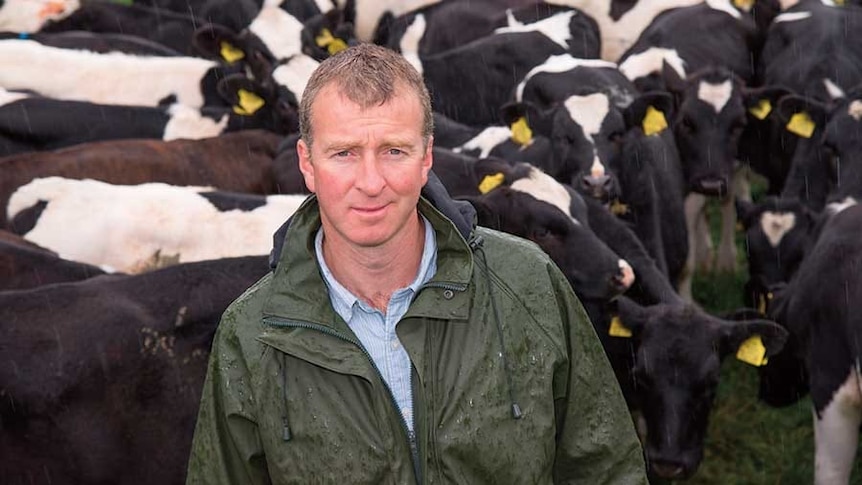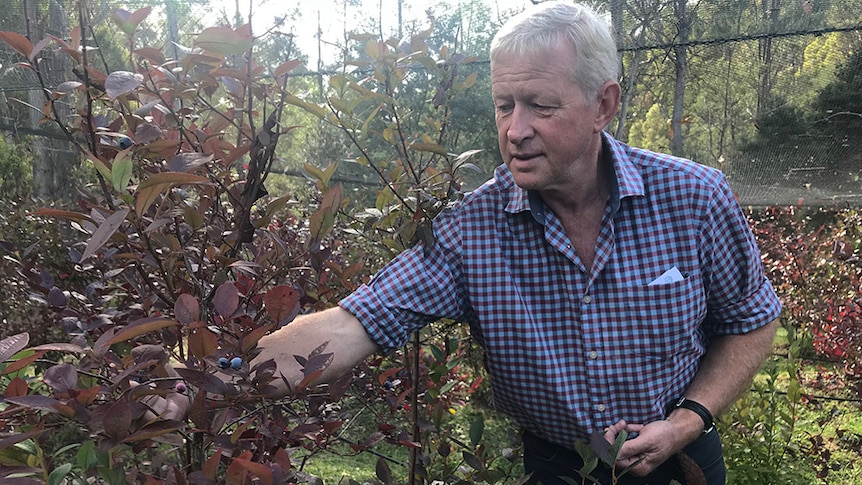Robert Craig’s memories of foot-and-mouth disease tearing through the north of England are more than 20 years old, but they’re as painful as ever.
Key points:
- More than 6 million cows, sheep and pigs were slaughtered in an outbreak of foot-and-mouth disease in England in 2001
- A local farmer and an Australian vet say lessons can be learned from the UK
- The Australian government has ramped up biosecurity measures in efforts to prevent and prepare for an outbreak
“It still makes my hair stand on end now,” the dairy farmer said.
“You don’t realize at the time that things do affect you longer term.”
There has not been an outbreak of the disease in Australia for over a century, but cases detected in Indonesia in May have put authorities on high alert, and farmers fear what could happen if the disease lands in Australia.
Foot-and-mouth spreads rapidly between cloven-hoofed animals including cattle, sheep, pigs and goats. It’s serious and highly contagious.
Warning: This story contains images some readers may find distressing
In February 2001, Robert Craig was raising a young family in Cumbria, which became one of the worst-affected areas during a devastating outbreak of the disease.
It led to the mass slaughter of cows, pigs and sheep.
“I remember being out in the fields, I think spreading fertilizer, and they were rounding up these sheep and lambs and there’s this truck in the gateway,” he told the ABC News Daily podcast.
“Seeing them rounding up newborn lambs and you knew where they were going, that was just hideous. Absolutely hideous.”
Mr Craig said he remembers tracking the spread of the disease on a map and watching as it got closer and closer to his own farm.
“There was a real sense of despair. It was hard for people to see at that time how anything could get back to normality because such a huge number of livestock had been taken,” he said.
Over the course of 11 months, more than 6 million cows, sheep and pigs were slaughtered in an effort to contain the spread of the disease, although only a relatively small portion of that number had the infection.
In total 2,000 cases were ultimately confirmed across the UK.
“I don’t know whether it did any good either. There was a fair bit of panic at the time,” Mr Craig said.
“It was just like, removing as much livestock as possible to try and slow [it] down, to get in front of it because it had gotten so badly out of control.
“I don’t know if they even tested these sheep that were taken away.”
Mr Craig was one of the lucky ones whose animals were spared, but his community suffered badly.
“Pretty much all of our neighbors sort of succumbed to it at some point,” he said.
“The whole of our area was pretty much just dead, like no livestock at all.”
Australians sent to help
Australian vet Bill Sykes has similar “life-changing” memories of the time.
The Victorian, who had a background in national disease control and animal slaughtering, was sent to Yorkshire, in northern England, as part of an Australian contingent deployed to help.
“It’s 20 years on, there’s a lot of things I don’t remember since five minutes ago, but these things come back, and they haunt,” he told the ABC News Daily podcast.
Mr Sykes recalls how the abattoir workers would try to calmly gain the trust of bobby calves, or calves less than a month old, before the slaughter.
“The strategy was to put his finger in the calf’s mouth so that it would happily suck and while it was sucking, he’d shoot the animal with a captive bolt pistol, and it would drop and then he’d go to the next one .”
But for him, the destruction of newborn lambs via lethal injection was particularly devastating.
“They went limp in your arms, you put them down and you picked up the next one,” he said.
“And I happened to love little lambs. I found that real, real tough.”
Mr Sykes said the immediate impact of the disease in the countryside was stark.
“At the bottom of the valley, everything is normal, sheep and cattle grazing in the paddocks,” he said.
“By the time we get to the top of the valley there’s nothing there, it’s just an eerie silence. It’s a sea of nothing.”
Australia assesses its preparedness for an outbreak
Bill Sykes, who is also a former regional vet officer in the Victorian Agriculture Department and former Nationals MP, is enraged by reports of Australia’s biosecurity laws being breached.
Foot-and-mouth disease can be carried on meat and animal goods, and in one recent case, a backpacker returned from Indonesia with prohibited meat.
The passenger was fined $2,664 after being detected with undeclared sausage meat and a ham croissant at Darwin airport.
“Just unbelievably dumb. Stupid, thoughtless, call it what you like, but that’s the sort of situation that can occur,” Mr Sykes said.
Foot-and-mouth disease can also spread in air particles between animals situated closely together, through contaminated water and on clothing and footwear.
The risk of a foot-and-mouth disease outbreak in Australia has increased to approximately 12 per cent after the recent spread in Indonesia and its popular tourist island, Bali.
Mr Sykes said vigilance is paramount.
The Australian government has introduced a range of measures to lower the risk of foot-and-mouth disease entering the country.
Biosecurity measures have been ramped up at airports, including installing acidic disinfectant foot mats and increased surveillance on meat products entering the country.
Agriculture Minister Murray Watt announced a new task force will also be established to focus on how to best prepare for a potential outbreak.
The government is also considering advice that recommends people returning from Indonesia avoid Australian farms for five to seven days.
A positive case here would immediately shut down livestock exports and trigger a national veterinary emergency plan called AUSVETPLAN.
“Because we rely so heavily on our export markets, something like 60 to 70 per cent of our red meat goes overseas, those markets will be closed immediately, and it will take a long time to re-establish those markets. That’s going to have a massive economic impact,” Mr Sykes said.
Mr Sykes said Australia was already in a better position to control an outbreak thanks to more capability to trace the movement of livestock, as well as having a warmer, drier climate which gives way to less wind-borne spread of the disease.
But there are still lessons we can learn to avoid destroying so much livestock.
“We will not have the social license to do … what the UK did by immediately slaughtering [animals]. We will adopt a surveillance approach,” he said.
“The lesson we’ve learned is that we will adopt a different strategy and hopefully rely on high-quality risk assessment and more targeted slaughtering.”
Robert Craig said the biggest lesson from the UK outbreak was realizing that farmers have a huge responsibility for protecting their own livestock.
“You have to be very much on top of your own biosecurity and restricting people from coming and going,” he said.
“Because once you’re behind, it’s very difficult to get in front of it again and get it back under control.”
.

